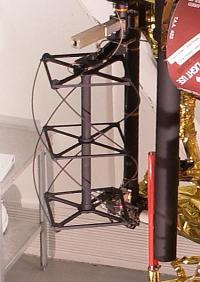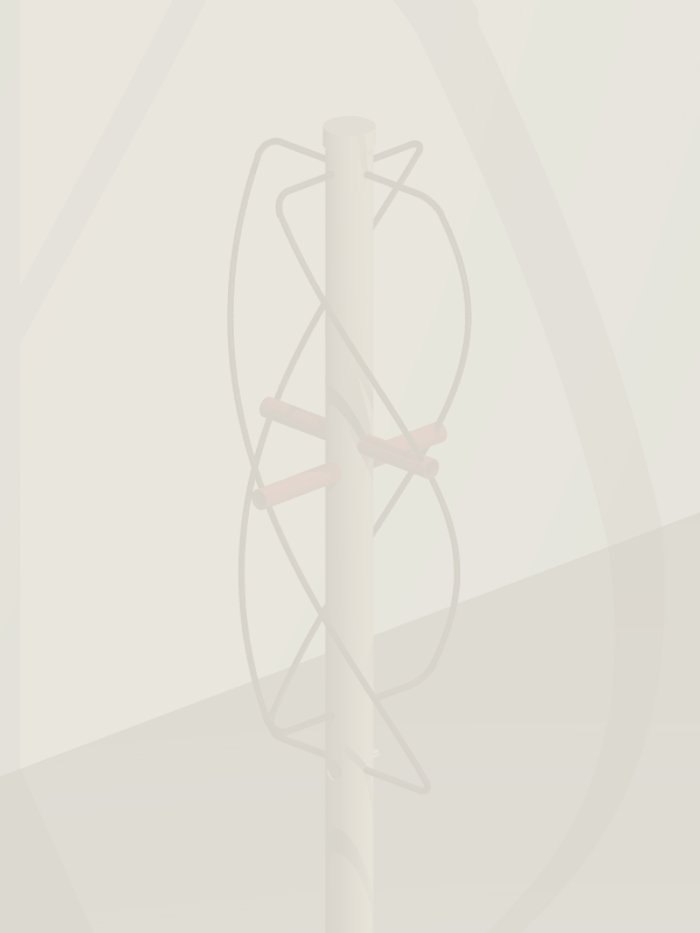Design and construction of quadrifilar helicoidal antennas

One of the two QFH antennas on NOAA-17
(Photo courtesy and (c) Lockheed Martin |
The quadrifilar helicoidal antenna - quite a mouthful - is easy to
construct (even though it does look complicated), and the results are
excellent. In contrast with the omnipresent turnstile antenna (two
crossed dipoles with a reflector) the circularity is almost perfect
in any direction. I've also received quite a few reports from people
who built the antenna using the data from this page, who were very
satisfied.
In it's original form, the relation between diameter and height is
0.44, but decreasing this relation slightly, a still better coverage
of for satellites near the horizon is obtained. In literature and
on the web, extreme versions can be found.
If the left column of this page (under 'Pictures') are links to
pictures of several versions built by me and sent to me by several
happy readers. The first link shows images generated by POV-ray.
|
On using the QFH for WiFi
Regularly I get questions similar to the one which follows:
Hi, your page is very interesting. I'm interested in an omnidirectional
antena with circular polarization on 2.4 GHz, but I'm not sure if you
have seen any successful tests using the QFH for 2.4 GHz. According to
the calculator, I get an antenna which is slightly over 4.8 cm in height.
Could you tell me the gain which would have this antenna? Would it be
useful for a hot spot?
Alfred... There is no such thing as gain in an antenna. This is one of
the most difficult things to teach my students. This term was established
many years ago, probably for commercial reasons...
The correct term is directivity - i.e., the capacity of antenna to
direct the available power into one preferred direction. This looks
as a gain in the correct direction, but the power was 'stolen' from
elsewhere.
The QFH is an excellent antenna for satellites, as it receives from
'the entire northen hemisphere', from horizon to horizon, with all the
sky in between. Such an antenna cannot have any significant 'gain', as
it doesn't have directivity. Such an antenna is not useful for hot spots,
as you probably won't have any clients 'in the sky'.
Moreover, your clients, except if you give them new, circularly polarizaed
antennas, will probably be using vertical antennas from their laptops or
notebooks. This means an extra loss of 3 dB because of the polarization.
I'll put this text on the page, as it seems to be a regular issue.
Greetings,
John
Bibliography on quadrifilar antennas
- The ARRL Antenna Handbook
- The American Radio Relay League
- (Information at Amazon.com)
- A Quadrifilar Helix Antenna for 137 MHz
- De George Goodroe, KF4CPJ. An extremely narrow version of the QFH
- Paul's Weather Satellite and Waffle Page
- from Paul Hayes. Page is a bit overloaded with Flash, etc., but has
some interesting files on QFH construction
- Personal pages of PA0ROJ
- Partly in Dutch, partly in English - Follow the link to 'Weather
Satellites'
- Simplified astronomy (German)
- Astronomy with simple tools. This is the page of Heiko Mayer
who helped my translate this page into German.
365509
|
(c) John Coppens ON6JC/LW3HAZ |
mail |


